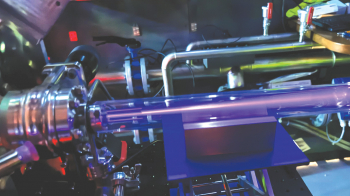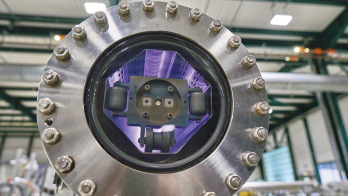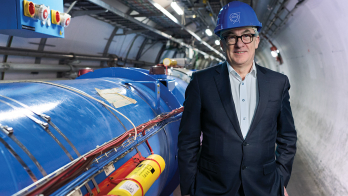Researchers at the Brookhaven National Laboratory have developed a compact linear accelerator that uses laser light to accelerate electrons with better efficiency and energy characteristics than before. The results from the experimental device, called Staged Electron Laser Acceleration (STELLA), may help in the development of linear accelerators that can deliver higher energies than are currently possible using microwaves, without becoming unfeasibly long and expensive.
The STELLA experiment was performed at Brookhaven’s Accelerator Test Facility (ATF) by a collaboration from Brookhaven and the universities of California at Los Angeles, Stanford and Washington, together with STI Optronics. Electrons from a standard linac at the ATF were injected into STELLA with an initial energy of 45 MeV. The electrons were then directed into an inverse free-electron laser (IFEL), with powerful permanent magnets that force the electrons to “wiggle” so that they radiate. Simultaneously, a laser beam was sent through the IFEL. The laser effectively regulated the electrons’ energy, speeding up the slower electrons and slowing down the faster ones. As a result, the slow electrons caught up with the fast ones and grouped together to create “microbunches”, each with a length of only 1 micrometre. This is one of the shortest microbunches ever created, its importance being that it makes it possible to accelerate the electrons without leaving many behind. Additionally, the microbunches were separated by only 10.6 micrometres, a distance equal to the wavelength of the laser beam.
The microbunches then travelled into a second IFEL, where they were accelerated by the laser beam to a higher energy, while staying tightly grouped. This process is in fact the essence and most difficult part of the experiment. However, the researchers were able to accelerate the microbunches without leaving behind a large number of electrons: up to 80% of the electrons remained trapped in the microbunches. Moreover, STELLA accelerated the electrons from 45 MeV to more than 54 MeV. The trapped electrons also remained more or less monoenergetic, with more than two-thirds staying within 0.36% of 54 MeV.





